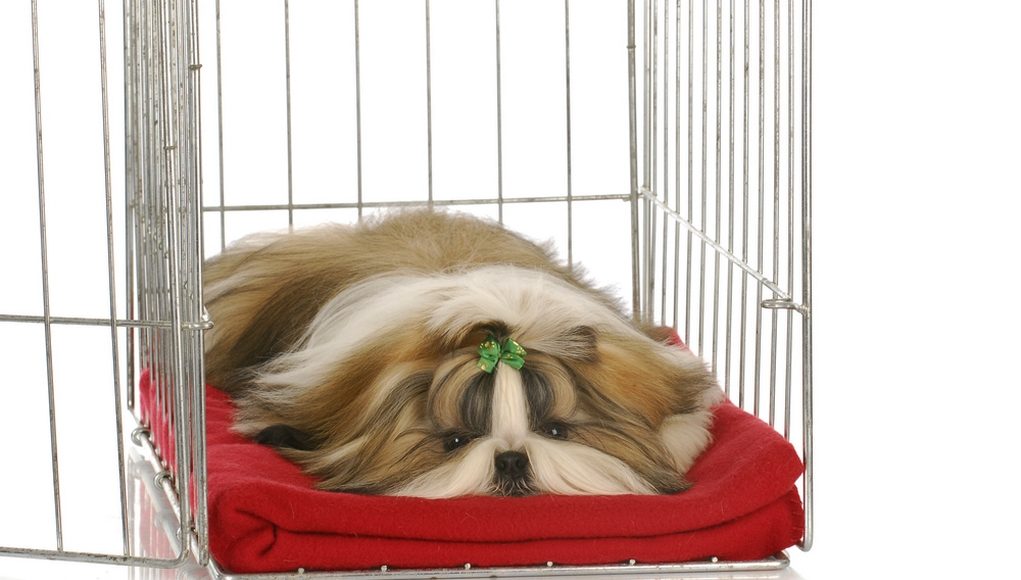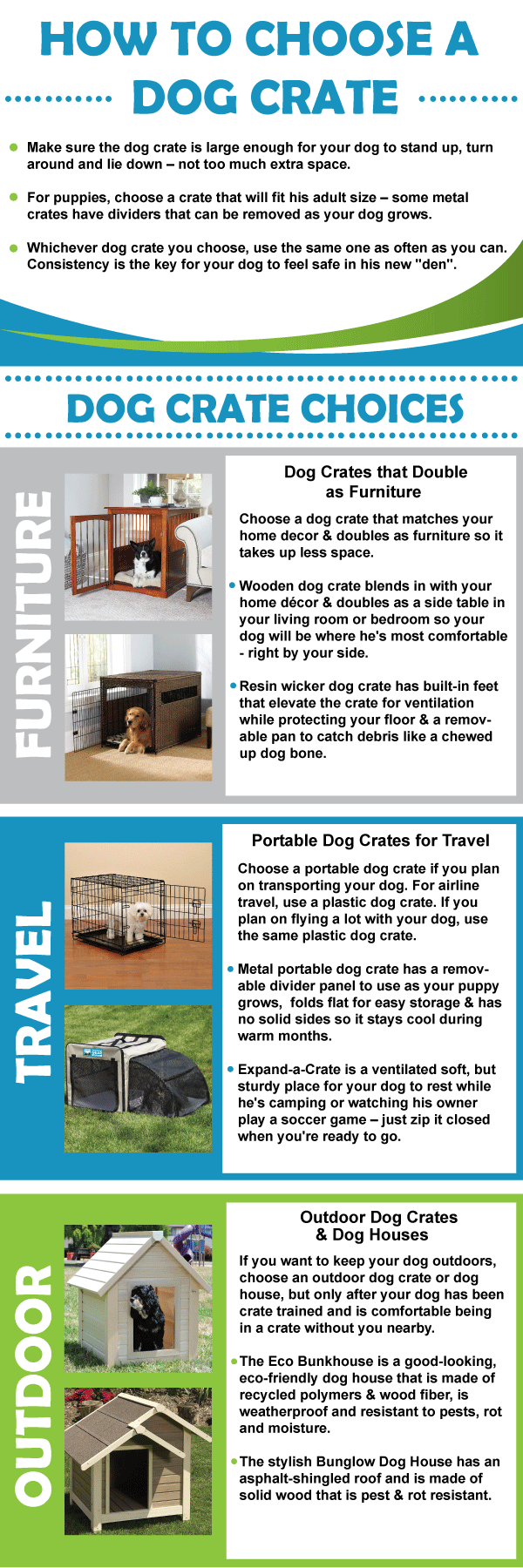So you’ve finally decided on getting yourself a dog, but with that responsibility comes lots of time spent housebreaking. In recent years, crate training dogs has been a very popular way to house train your dog. You'll need to find the best pet crate for your pup's specific needs, and this article will walk you through what you need to know about dog crates.
Dog crates are one of the most useful dog supplies. Canines love a space where they can go to when things get to be too much. They enjoy having a safe place where they know no one will bother them. That’s where a pet crate comes in handy.
Not all dogs are the same, and that goes for the different pet crates. It can be confusing choosing the right crate for your dog, especially because there are so many different types of pet crates. For more details on the differences between all dog crates, read this article.
 No one dog crate is perfect for all dogs.
No one dog crate is perfect for all dogs.
Many factors need to be considered when picking the best pet crate for dogs, and particularly your specific canine. Big, small, young, old dogs – all of these aspects need to be taken into consideration when choosing and purchasing a new dog crate.
Your and dog's lifestyle must also be considered. Will you be traveling with your dog, or is the pet crate only for home? Do you live in a house or apartment? Will this crate be for outdoors, indoors or both? Is your puppy house trained or not yet?
Finding the best pet crate for dogs might seem like a math problem to some, but if you know what to look for you’re already halfway there. Let's dig deeper into this.
RANKINGS: Top 50 Best Dog Crates of All Time
This Is What Makes the Best Pet Crate for Dogs
(and your specific pup)
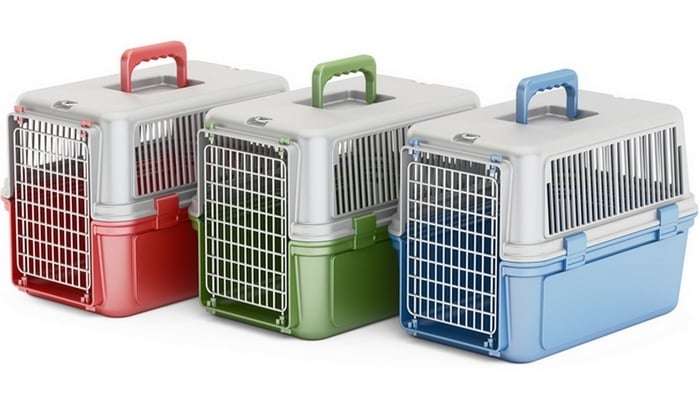 1. Consider your dog's coat
1. Consider your dog's coat
Certain breeds, like the Husky and Chow, have dense, thick coats. This means they can overheat very quickly. When buying a crate for dogs with heavy coats make sure that it is made out of wire, so air can circulate easily.
It will make your dog feel a lot more comfortable and he’ll enjoy spending time in his crate. Just don’t leave it somewhere where the sun will eventually get to it. Make sure it’s a cool area where air travels through the room.
You can buy a big crate with a divider that you can use as your puppy grows bigger and needs more space. Plenty of the best pet crate options are made of strong metal wire and can easily be stored when not in use. Most also come with a removable floor tray that's very easy to clean.
RECOMMENDED: Top 5 Best Metal Dog Crates
2. Destructive and escape artist dogs
A few owners have dogs that want to chew everything in their path, and a few even know how to escape a crate.
This is where the heavy duty crate comes in handy. They are basically indestructible (unless you drive over them), and they can keep your canine friend from wreaking havoc when you aren’t around.
Knowing that your dog can’t get out and hurt himself is a comforting thing when you’re busy elsewhere. They are also perfect for travel, especially if you and your dog are jetsetters.
3. Small non-destructive dogs
A soft sided crate is perfect for the Yorkie or Pomeranian who isn’t chewing their way through life (puppies still chew, no matter their size). It’s lightweight and perfect to use when traveling in a car or even when going for a picnic.
This is another type of pet crate that’s easy to fold and store when not being used.
The soft sided crate shouldn’t be used with destructive dogs, you’ll come home to a shredded crate and home. So make sure when purchasing one that your dog is past the chewing stage and rather enjoys laying down for a nap.
WATCH THIS: How To Choose the Right Size Dog Crate (Video)
4. Crate for den lovers
The plastic crate is the best pet crate for those dogs who enjoy napping under the table or finding a spot in a corner where they can have some peace and quiet.
It’s also a difficult crate to escape from especially if you buy it one size bigger than your dog needs. There are different colors available and it’s great for air travel.
So, if you’re lucky enough to have a chill four-legged friend, this is a great option. Definitely a great all-around crate if you have a pup who enjoys sleeping in and feeling safe.
5. Crate for adult dogs
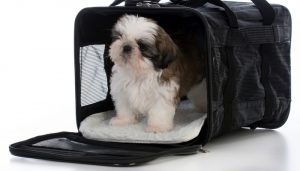 When choosing a crate for an adult dog who is already house-trained you can allow a little extra space for comfort.
When choosing a crate for an adult dog who is already house-trained you can allow a little extra space for comfort.
He won’t potty in the crate because he already knows to do it outdoors or on puppy pee pads. In this instance, you can choose a crate that’s a lot more comfortable and forgiving, instead of one that’s used for training.
6. The travel pet crate
When purchasing the best pet crate for travel, remember to make sure that there’s enough space for your dog to stand up and turn around in. His sides shouldn’t touch the crate and his head should have space to move around in. Remember to add a bit of space for his tail too, you don’t want a crumpled up tail when you land.
You also don’t want to buy a crate that’s too snug nor too big. If it’s too small, the dog will be uncomfortable and have a terrible flight. If there’s too much space, the dog will flop around and might get injured. Make sure the dimensions are correct before embarking on a journey with your best friend.
RELATED: 5 Best Dog Travel Crates for Long Trips
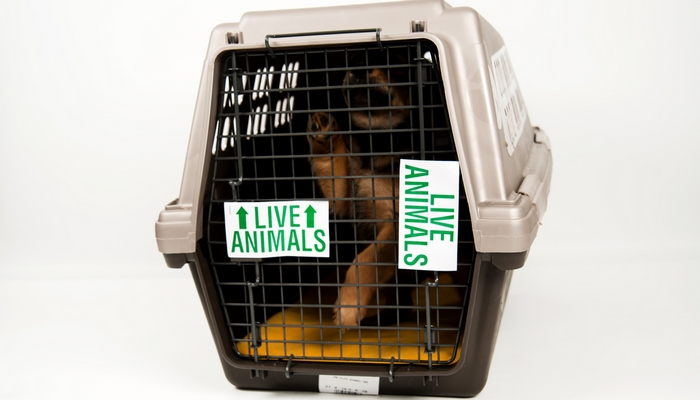
7. Puppy dog crates
When going out to buy your puppy his first crate, don’t opt to buy one that fits his current size. Your puppy is going to grow, and if you don't buy a crate that will fit his adult size you'll just have to buy another one when he outgrows the first.
There are crates with dividers that are the best option for puppies. As I mentioned earlier, you can move the divider as your puppy grows. The size of the crate will be a guessing game, because you won't know the exact size of your full grown dog.
Do a bit of research to find the average size of your dog's breed when they are an adult and hope that your pooch isn't an exception.
CHECK THESE: 15 Best Small Dog Crates for Puppies or Small Dogs
8. Senior dogs
With age comes a lot more responsibility. If your dog is leaning towards the geriatric side of things, bladder control will definitely start to become a problem. Older dogs aren’t as busy nor do they jump up on people as readily anymore.
Don’t opt to put your senior pet in a crate when you can’t be around to keep an eye on him. The chances of him soiling himself are a lot greater, and his time here is limited. Instead allow your senior pupper to spend as much time with you as possible and help him go outside when he needs to go potty.
A soft crate with lots of bedding and soft sides is perfect for the older generation canine. Just don’t leave him by himself for too long and don’t shut the crate gate. Your old dog will be very grateful, trust me.
READ NEXT: 11 Tips On How To Use Dog Crates Safely


